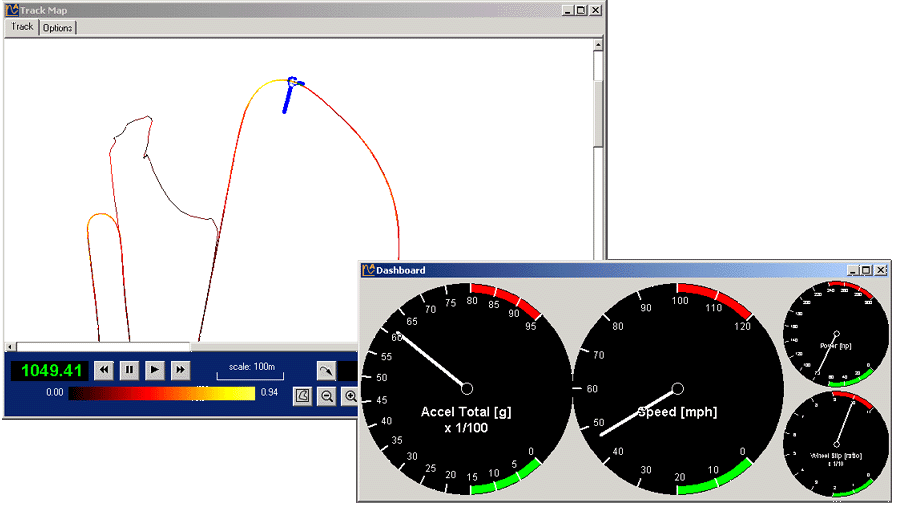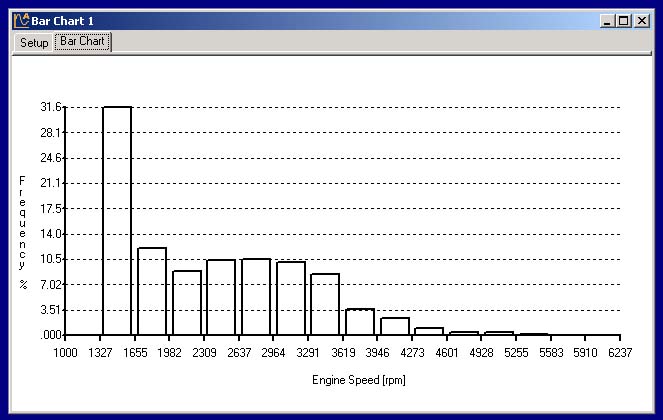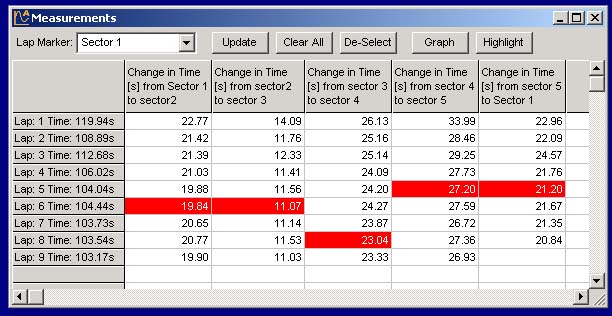8 Ways To Improve Your Performance With A DL90 !
So by now you have probably looked at the pictures of the DL90 and screenshots of the software and thought it is all very nice.. but you are also wondering if it is going to help you drive better and win races! After all, you could spend the money on a nice carbon fibre steering wheel, or maybe a new final drive. To help you make your decision, we have made a list of genuinely useful things you can do after a race to improve your performance next time out on the track. This isn't a top 8 list, or in anyway definitive - however they do introduce you to some important ideas in an interesting way..
1. Lap Times. Okay, it has to be in there! Lap times are a simple and intuitive way of seeing how well you performed during the race. However, because the DL90 is GPS based you aren't limited to a single lap timing, you can add timing points wherever you like on the track map. This means you can easily measure sector times, times to get around a particular corner, and so on. That way, not only can you see if you had a good lap or not, but where a particular lap went well, or badly!
2. G Circle. This is an absolute classic graph, and it can tell you a great deal of information! You simply plot all the longitudinal accelerations against all the lateral accelerations.. that's the easy bit, but now you need to interpret it! The graph below is an example plot and is from a relatively inexperienced driver (I'm sure he won't mind me saying that). There are 2 very important points that can be made from looking at the graph.
3. Replay The Race Looking At Total g. It is inevitable that when driving around any given circuit some corners seem to flow, whilst you loose out to your competitors on others. A very simple and intuitive way to gauge how well you are taking each corner is to replay the race in the screen and look at 'Total Acceleration [g]' on the virtual dash board. As you replay each corner it will become apparent that some corners were taken well with high total g force, while other corners could have been taken faster as indicated by a slow total g force.

4. Measure horse power to see if the car is running okay. This one is simple enough, just have a look at a bar chart of power to make sure that the car was running in proper tune. The DL90analysis software corrects the measured calculated vehicle power using the ambient conditions you input, to a number of international standards including DIN and SAE making comparison between races very accurate.

5. Check The Correct Rev Range Of The Engine That Is Used. This is a common graph simply to check that the correct rev range is used and the engine is being kept in it's peak power band. The bar chart below is from a driver who clearly needs to use his rev counter more often, or alternatively needs a different back axle - more revs required!

6. Monitor Engine Oil, Brake and Under Bonnet Temperatures. This is very straightforward - before you start spending money on expensive vehicle upgrades, check to see what is going on at the moment! Just as important, measure the benefit of any upgrades you do - for example, does the exhaust manifold wrap really reduce racing underbonnet temperatures? Is you new oil cooler getting enough airflow?
7. Calculate the best track time around lap. Simply add a couple of track markers around the track and measure the time between them for each lap. Now simply add all your best times together to get an imaginary best lap! Now the real question is what you did right on each of those sections and try and do that next time out! For the race details shown below the best lap actually achieved was 103.17 seconds, the best imaginary lap made up of all the best sector times was (19.84+11.07+23.04+27.20+21.20) 102.35 seconds .. not bad!

8. Compare this seasons performance with last's. Before you go out on any particular circuit have a look at how you did last time. Reminding yourself of braking points, the cornering forces you achieved, and speeds down the straights should give you a very good idea of whether you are pushing hard enough or not. It is common for drivers to be too tentative on the first few races in the season, whilst looking at data isn't the whole answer, seeing real numbers certainly gives you an excellent target to aim for.